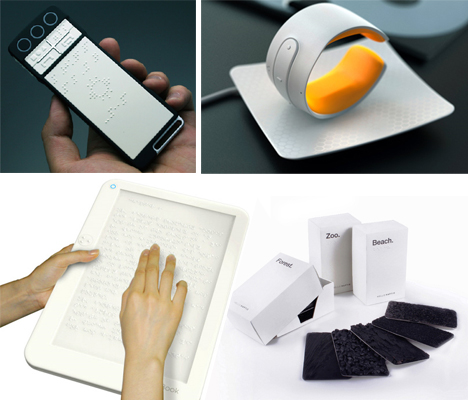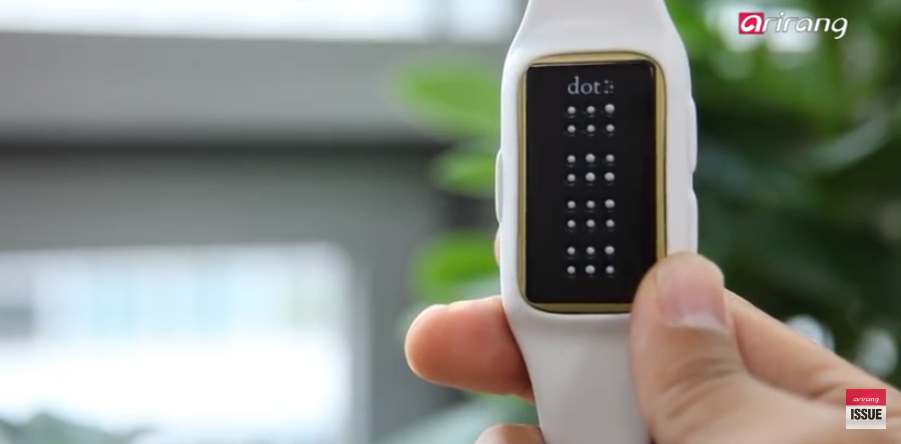Enhancing Lives With Advanced Assistive Devices for the Blind
The assimilation of innovative assistive devices for the blind is transforming just how people experience their environments and connect with their areas. Developments such as enhanced truth wise glasses and innovative digital traveling aids not just promote navigating yet also enhance general top quality of life. These technologies foster a feeling of freedom and self-efficacy among users, allowing them to carry out daily jobs with newly found self-confidence. The effects of these improvements prolong beyond simple performance; they challenge societal assumptions of handicap and independence. What does this development imply for the future of assistive technology and its role in empowering individuals?
Introduction of Assistive Gadgets
Assistive gadgets for the blind include a diverse array of tools and technologies developed to improve self-reliance and enhance the lifestyle for individuals with visual disabilities. These gadgets accommodate different needs, from navigation and movement to communication and daily task management.
One of the key groups of assistive tools consists of wheelchair aids, such as white walking sticks and guide dogs, which help users browse their environments safely. Electronic travel aids, equipped with sensing units and audio comments, likewise play a considerable function in mobility improvement.
Furthermore, gadgets that assist with daily living activities, such as flexible cooking area devices, Braille labels, and chatting watches, equip people to perform tasks separately. Communication aids, consisting of display readers and Braille displays, promote accessibility to info and make it possible for people to engage effectively with the electronic world.
In addition, low-tech options like magnifying glasses and large-print products stay vital for several individuals. Collectively, these assistive devices serve not just as functional devices yet likewise as vital enablers of freedom, cultivating greater involvement in a globe that frequently focuses on sighted experiences. Their assimilation into every day life is essential for promoting inclusivity and boosting general well-being for those with visual problems.
Ingenious Technologies in operation
Technology in innovation has dramatically changed the landscape of devices offered for people with visual impairments. Amongst the most notable improvements are smart glasses integrated with augmented reality, which offer real-time navigation assistance and object recognition. These tools utilize progressed electronic cameras and expert system to supply acoustic hints, enhancing the individual's spatial understanding and freedom.
Furthermore, mobile applications have become effective sources, allowing users to recognize money, checked out text out loud, and navigate unknown atmospheres via spoken instructions. Tools such as Braille display screens and refreshable Braille tools remain to evolve, supplying smooth connection with mobile phones and computers, consequently improving communication and access to information.
Wearable technology, consisting of smartwatches outfitted with voice-activated features, further equips customers by helping with fast accessibility to alerts and signals without calling for visual engagement. Responsive maps and 3D printing are also getting traction, supplying concrete depictions of areas that help in orientation and flexibility training.
Collectively, these cutting-edge innovations not just enhance the lives of aesthetically damaged individuals but likewise foster greater freedom, inclusivity, and interaction with the broader area, thus reshaping understandings of ease of access. (Assistive technology for the blind)
Personal Stories of Empowerment
Empowerment often arises from individual experiences that highlight the transformative impact of modern technology on individuals with visual problems. Take, for example, the story of Sarah, a young artist that reclaimed her enthusiasm for paint via the use of a wise walking cane equipped with obstacle detection. This gadget not only promoted her flexibility but instilled a newfound self-confidence, permitting her to navigate public areas independently and pursue her creative endeavors.

These stories highlight the extensive impacts that progressed assistive gadgets can have on day-to-day live. By enabling individuals to overcome barriers, modern technology promotes a sense of freedom and self-worth. Such empowerment tales function as a testimony to article the potential of development, illustrating how the right devices can considerably enhance lifestyle and open doors to brand-new possibilities for those with visual impairments.
Benefits of Advanced Solutions
How can advanced options essentially improve the lives of individuals with visual impairments? The integration of advanced modern technology right into assistive devices significantly changes day-to-day experiences for those impacted by vision loss. These sophisticated services offer extraordinary freedom, allowing users to browse their settings with confidence. Instruments such as clever walking sticks geared up with sensors, navigating apps, and wearable technology are made to give real-time feedback, enhancing spatial awareness and lowering the threats connected with movement.
Additionally, advanced assistive technologies foster social addition by assisting in communication and interaction. Voice-activated tools and apps enable people to accessibility info and engage with their surroundings separately, damaging obstacles that previously hindered their involvement in instructional, professional, and social settings.
In addition, the personalization and flexibility of these services provide to the varied needs of users, consequently boosting their overall lifestyle. Boosted functionality, such as object recognition and text-to-speech capacities, encourages individuals with visual problems to do tasks that they may have when located challenging. Ultimately, advanced assistive innovations not just boost freedom and safety and security but also promote self-respect and self-regard, allowing users to lead fulfilling lives.
Future Fads in Assistive Technology
As technology continues to evolve, the landscape of assistive devices for the blind is positioned for remarkable innovations that will further improve availability and self-reliance. Arising patterns in assistive innovation indicate a shift towards boosted combination of man-made intelligence (AI) and artificial intelligence, making it possible for tools to adapt to individual customer requires in real-time. These developments are expected to promote more intuitive navigating systems that can determine obstacles and give audio comments, considerably boosting outside mobility.
Additionally, the advancement of wearable tech, such as clever glasses furnished with enhanced reality, will certainly enable users to obtain contextual info about their environments, thereby improving their spatial understanding. Additionally, advancements in haptic innovation promise to produce tactile comments tools, enabling users to view details with touch, boosting discovering and interaction with their atmosphere.
Telecommunication breakthroughs are also leading the means for remote assistance options, where trained experts can give assistance using video phone calls, making certain affordable glasses assistance is readily available. As these fads unravel, the future of assistive tools for the blind will most certainly foster greater autonomy, equipping individuals to browse their globe with self-confidence and convenience.

Verdict
The combination of advanced assistive tools for the blind represents a substantial improvement in fostering freedom and enhancing lifestyle. By using innovative modern technologies, these gadgets encourage individuals to browse their atmospheres with greater self-confidence and freedom. As the field continues to progress, ongoing r & d will likely produce even extra advanced solutions, further transforming the lived experiences of individuals with aesthetic disabilities and promoting a better sense of inclusion within society.
The assimilation of innovative assistive gadgets for the blind is changing just how individuals experience fashion glasses for women their surroundings and connect with their communities. The integration of sophisticated modern technology into assistive devices significantly changes everyday experiences for those impacted by vision loss.As modern technology proceeds to evolve, the landscape of assistive devices for the blind is positioned for impressive advancements that will additionally boost access and freedom. Arising patterns in assistive technology indicate a change toward increased assimilation of fabricated intelligence (AI) and maker discovering, making it possible for gadgets to adapt to individual customer requires in real-time.The combination of innovative assistive devices for the blind stands for a considerable advancement in promoting independence and boosting quality of life.